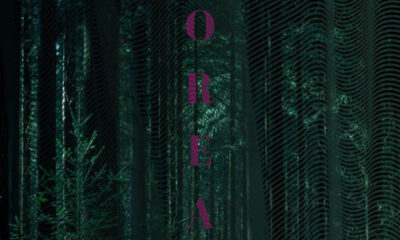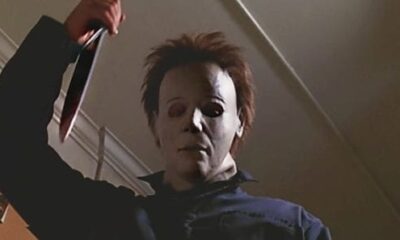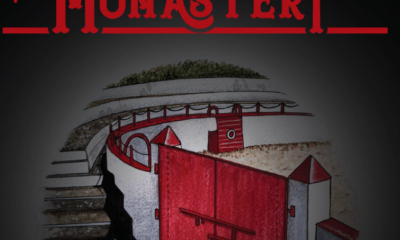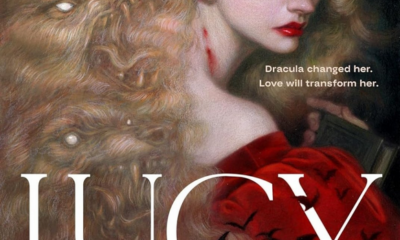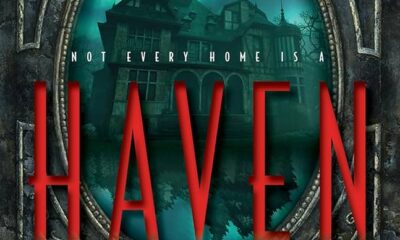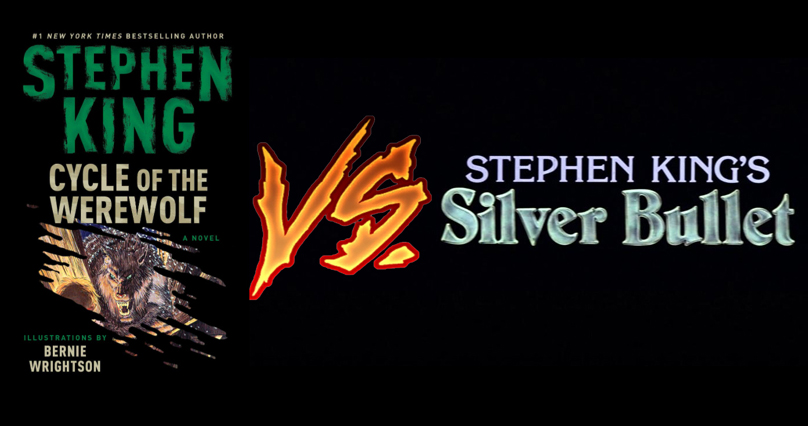
Cycle of the Werewolf VS. Stephen King’s Silver Bullet
More Videos
Published
4 years agoon
By
Audrey IIIThere’s quite a few Stephen King movie adaptations that bear little resemblance to the books they’re based on. Stephen King’s Silver Bullet, based loosely on King’s novella The Cycle of the Werewolf, may be one of the more hilariously entertaining deviations from its source material. Whether that was internal or not remains to be seen.
The Cycle of the Werewolf
The Cycle of the Werewolf is unique in King’s repertoire in that it was released as a fully illustrated short novel with each month of the year being a chapter in the story of a werewolf terrorizing the fictional town of Tarker’s Mills, Maine. The chapter format of the book was in part because it was originally supposed to be a calendar, but King found the format too constraining for his storytelling style and it was expanded into a novella.
There aren’t any real main characters in the book. Instead it focuses on the events of the month from the point of view of various townspeople. The plot doesn’t really start until around July and even then it doesn’t bring some relevant characters back together until the last chapter December.
The story itself is a pretty basic werewolf tale with a few notable twists. It’s really illustrator Bernie Wrightson’s gorgeous drawings that help bring the story to life. They complement the story beautifully and can tell the entire story almost on their own.
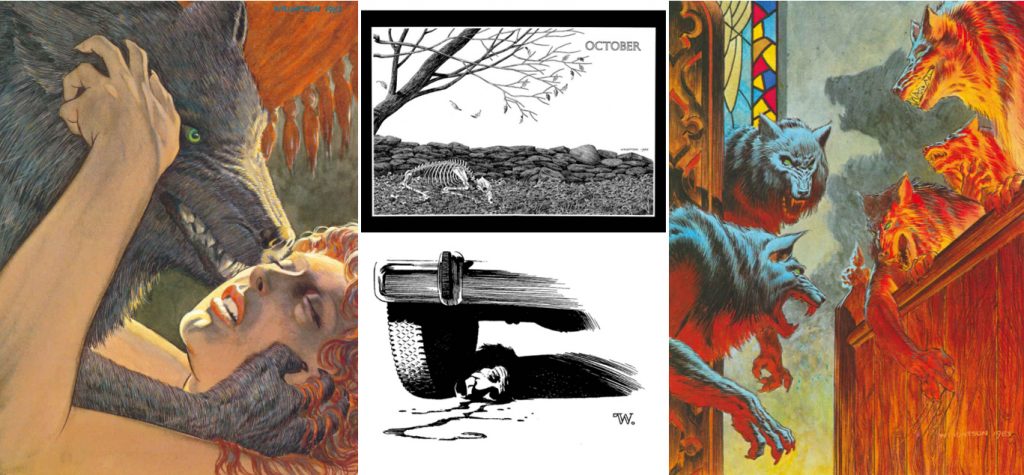
In general, it’s a short but fun little novella that doesn’t break any boundaries but tells a solid gothic horror story nonetheless.
Stephen King’s Silver Bullet (major spoilers here because, boy, do we have a lot to talk about)
The movie adaptation of the book takes almost a 360 in terms of tone and atmosphere from the book. Where the book had an almost grotesque feel to it, the movie goes full out 80s B-movie horror, and to great effect I might add. It’s become something of a cult classic and was the perfect fodder for those pre-teen late night slumber parties huddled up together under your blanket fort.
Our main character is now Marty Coslaw (whose last name I will never get over); a wheelchair bound pre-pubescent who really has a darkly sadistic side, more on that later. Marty’s sister Jane, who didn’t really play much of a part in the book, hates him and constantly calls him a booger for all the things he seems to get away with due to his disability (she’s right by the way). Gary Busey is also there playing basically himself. Seriously, he was allowed to ad lib most of his lines because he related to the character of Uncle Red so much.
.
There are some werewolf kills early on, but the movie mostly forgoes the month to month format entirely and kills off half the town over the course of a few full moons when a vigilante group is formed and decides to go out into the woods at night with no flashlights and zero planning. It ends about as well as you would expect.
One thing that did carry over to the movie from the book is a scene where the town priest, Reverend Lowe, played by Everett McGill, has a dream sequence of his entire congregation turning into werewolves. It kind of lets the cat out of the bag who the werewolf is at that point, but it’s also one of the most memorable scenes in the movie due to the novelty of a whole room full of people just werewolfing out.
It’s around the half point mark in the movie where things start to veer even more wildly from the book. Now you would think the silver bullet in the title of werewolf movie would refer to an actual silver bullet, right? Not in the case of this movie. It’s actually the name of a diesel powered motorcycle wheelchair that Uncle Gary Busey gives Marty on the Fourth of July. That sucker gets up to at least 80mph, can be in no way shape or form street legal, and, as we see later, isn’t very effective against werewolves.
Uncle Gary Busey also gives Marty some fireworks to shoot off once everyone else is asleep since the town’s were canceled due to random werewolf serial killer on the loose, but probably not for COVID if this last year is anything to go by.
Since Marty is such a self-serving little bugger, he of course goes out and shoots off his fireworks and almost gets killed by the werewolf. He only just manages to get away by shooting the werewolf in the eye with a bottle rocket, which is really just unfair when the werewolf doesn’t get any projectiles to defend itself with.
After that mess, Marty recruits his sister to track down his victim under the guise of collecting cans for school (that was an actual thing in the 80s, you just had to be there). In the book Marty gets sent away for the summer and doesn’t run into the werewolf in human form until Halloween. Here it takes them about 12 hours tops to find him. Or more accurately, to find that bat from the picture up above when Jane discovers it in the werewolf’s garage, although where and when she saw the bat before remains a mystery since it was the local bar owner’s.
Marty then proceeds to be a troll and mails the werewolf some seriously bad takes.
Like any good 80s movie, there proceeds a wheelchair car chase scene, after which, Marty somehow convinces his Uncle Gary Busey that his life is in danger (even though he’s the one sending death threat mail) and he needs a real silver bullet to protect himself. After a very odd conversation with a gun dealer about what good presents bullets are for kids, Uncle Gary Busey gets the silver bullet for Marty and stays over to babysit Marty and Jane after sending their parents away on vacation (less witnesses).
The werewolf does show up at Marty’s that night, and very nicely announces himself by busting straight through the wall like the Kool-Aid man.
Remorselessly, Marty grabs the gun and the bullet and shoots the poor creature in its head before it can even begin to explain why it’s there. He and Jane then proceed to reenact that creepy Folgers Coffee Christmas commercial with the brother and sister that are a little too close to each other for comfort. End of movie.
Final Girl Thoughts
Whether or not you consider the movie or the book a classic, or even a cult classic, Cycle of the Werewolf and Stephen King’s Silver Bullet does make for some entertaining camp. It’s interesting to see what’s essentially the same story told in two very different styles. Roger Ebet even called the movie a parody of the book, and while I wouldn’t go quite that far, it definitely deserves an award for stretching the source material to a new limit. 4 out of 5 Cthulhu for an all around good time.
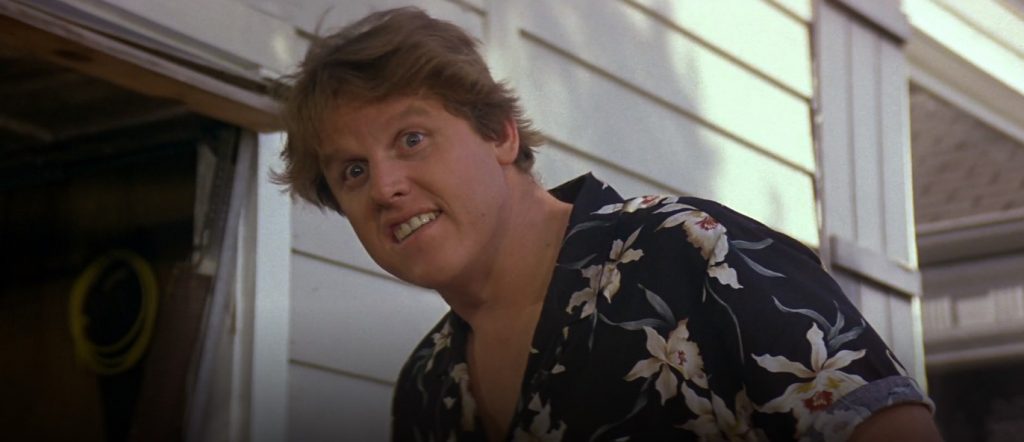
 (4 / 5)
(4 / 5)
You may like
Book Reviews
The Hotel: We’ll All Be There Soon.
Published
2 weeks agoon
March 17, 2025By
C M ReidDaisy Johnson’s, The Hotel is a collection of stories that tell the tale of a hotel built on cursed land. Originally written and recorded as a series for BBC Radio 4 in 2020, (you can find the recordings here https://www.bbc.co.uk/programmes/m000mrcg/episodes/player )
The fourteen-story collection was released in hardcover in 2021. Johnson’s prose is haunting, weaving together the stories of generations of families who have been tempted, forced, or serendipitously dumped at The Hotel. Most leave the message, “I’ll be there soon,” and many disappear from room 63.
- ‘The British literary heir to Stephen King’ Johanna Thomas-Corr, Sunday TimesA triumph of contemporary horror from the Booker Prize-shortlisted author, this collection of short stories will haunt you long after you turn the final pageA place of myths, rumours and secrets, The Hotel looms over the dark Fens, tall and grey in its Gothic splendour
- Built on cursed land, a history of violent death suffuses its very foundations –yet it has a magnetism that is impossible to ignore
- On entering The Hotel, different people react in different ways
Last update on 2025-03-17 / Affiliate links / Images from Amazon Product Advertising API
The Plot.
The Hotel tells the stories of the people who are drawn to The Hotel, or, more accurately, the ground the hotel is built on. The first story explains what we know about the hotel, its tendencies, moods, and … hobbies. We are then introduced to Mary Southgraves, ‘The Witch’, who comes to live with her husband on the land on which The Hotel will be built. The villagers in the pond drown her for predicting a sickness that takes the village children, (no this is not a spoiler she tells you she dies on the first page of her chapter.)
The proceeding chapters build upon this story. We meet the workers who are brought in to fill the pond to begin construction. A child of a guest in 1968 who meets another girl who may or may not actually be there. A maid who takes part in séances and Ouija board sessions. The stories progress through time into the present.
Highlights.
The haunting prose of The Hotel does the majority of the heavy lifting for this collection, which makes sense since it began as a podcast series. Johnson’s prose leans towards poetry, albeit more Poe than Keats.
The repetition of specific characters and family names throughout the different stories was intriguing, giving the stories links. These links trigger a sense of recognition for the reader. There is also a sense of anticipation, knowing what has happened to these families already, we wonder how much more they can withstand. The Hotel is like a curse following these families, but I think Johnson is commenting on lineage and the consequences of past actions. The sins of the father and all that.
- Fifteen highly original and darkly unsettling supernatural stories, performed by some of Britain’s finest actresses ‘This is what we know about The Hotel
- It is bigger on the inside than on the outside
- Do not go into Room 63
Last update on 2025-03-17 / Affiliate links / Images from Amazon Product Advertising API
Drawbacks.
These stories can get confusing at times and I think this is due to the briefness of the stories. It’s hard to keep track of a character that you have spent four pages with and remember them three stories later. I found myself having to stop and turn back to check if that person was who I thought they were. This pausing to turn back interrupts the reading experience. It pulls you out of the story and destroys the atmosphere that Johnson has worked to create.
The Final Take.
The Hotel was an interesting read. Johnson is a talented writer who has published a collection of linked stories that will keep the reader turning pages if only to find out the final fate of these families. That being said, it is obvious that the stories were initially written for a podcast. I’m not sure if it’s the way they are put together or… I don’t know, there’s just something ‘podcasty’ about them. As such I would recommend listening to the audio episodes (see the link above) over reading the book.
 (3 / 5)
(3 / 5)
On Halloween in 2016 Josh Malerman, author of Bird Box, released A House At The Bottom Of A Lake (gosh this is a hefty title!). Last week, I picked this slim book up off my library’s Adult Horror shelves, not knowing what to expect. What I got was a novella that should have been shelved in the teen lit section. Perhaps it is the rather weird underwater sex scene that precludes it from those shelves.
- From the New York Times bestselling author of Bird Box and Malorie comes a haunting tale of love and mystery, as the date of a lifetime becomes a maddening exploration of the depths of the heart
- “Malerman expertly conjures a fairy tale nostalgia of first love, and we follow along, all too willingly, ignoring the warning signs even as the fear takes hold
- ”—Lit Reactor The story begins: young lovers, anxious to connect, agree to a first date, thinking outside of the box
Last update on 2025-03-10 / Affiliate links / Images from Amazon Product Advertising API
The Plot.
When James asks Amelia out on a date during summer break, canoeing was the last thing that she expected. Borrowing his uncles canoe, James hopes he can show Amelia an exciting time, because he really likes this girl! The date starts well and the conversation, if stilted at times, is banter-ey and cool.
They head out on the first lake, but James has an idea that they might have a better time on the lake that joins to this one. It is quieter, no speed boats to show him up, they’ll be able to eat their picnic lunch in peace and quiet. When they arrive, though, they notice a tunnel, that may lead to a third lake. Eager to show Amelia that he is an exciting kind of guy, James heads through the tunnel.
Lo and behold, it is another lake! Albeit, a bit murky and deserted, but that’s alright. That is until they notice that beneath the bow of the boat is a tiled roof. Beneath that tiled roof is a whole house. What ensues is a summer of falling in love and exploring a sunken house that may not be as empty as they thought.
Highlights.
Malerman writing the internal monologue of an angsty seventeen-year-old on a first date is one of the most authentic things I’ve read for a long time. Even down to James worrying about revealing that his dad owns the hardware shop he works in. Scared that Amelia will think that is all he is going to do with his life.
The ending (which of course I cannot discuss here) was well done, although a little contrived and predictable. It felt as if it had been almost tacked on the end as an afterthought. Perhaps Malerman finished the story without the final chapter, but was encouraged to add that last bit to give readers some closure
- “A book that demands to be read in a single sitting, and through the cracks between one’s fingers
- There has never been a horror story quite like this
- Josh Malerman truly delivers
Last update on 2025-03-10 / Affiliate links / Images from Amazon Product Advertising API
Drawbacks.
Malerman is a good writer, we have seen this in the many novels he has released since Bird Box. A House At The Bottom Of A Lake did not meet the usual standard. There are many reasons I say this. The first is a lack of creativity in descriptive passages in this book. They all felt pretty drab and began to become repetitive by the end of the story. I don’t know how many, times Malerman compared the way that James and Amelia were moving under the water in their scuba suits as ‘Astronaut-like’ or ‘Astronaut-esque’ or ‘ Like he was walking without gravity’, but really can you find another comparison please because this one is all used up!
As I mentioned in the intro, this did feel like a YA novel. Not only because both of the main characters are seventeen, but the prose is a too simple to be engaging. A House A The Bottom Of A Lake might be marketed differently in Australia (where this humble reviewer lives), perhaps making it to the YA shelves in the US or UK, but this is definitely not adult horror.
The Final Take.
Josh Malerman is a favorite of mine. I tend to pick up his books, blurb unread, because I will generally enjoy what he is putting out there. The exception to this rule is A House At The Bottom Of A Lake (if I never have to type that title again I will be pleased!). It just didn’t hit the way his other novels have and I was disappointed.
 (2 / 5)
(2 / 5)
Imagine this. You’re home alone, waiting for your partner to return, when you hear a knock on your door. You answer it to see a family of five, bundled up against the cold. The father, a kindly older gentleman, explains that he used to live in this house as a boy. And he would love to show it to his family.
Do not let them in.
The story
Released in June 2024, We Used To Live Here is author Marcus Kliewer’s debut novel. It tells the story of Eve, who just purchased a beautiful house with her partner, Charlie. Their plan is to flip the house and sell it.
One night, while waiting for Charlie to come home, Eve is surprised by a knock at the door. It’s a man named Thomas Faust and his family.
Thomas explains that he grew up in the house and hasn’t been in the area in years. Would Eve let them in so that he can show the home to his children?
Against her better judgment, Eve lets them in. She regrets this almost at once when Thomas’s daughter vanishes somewhere into the house.
What worked
I always appreciate a book that allows you to play along with the mystery. And this book does that better than just about any other I’ve seen.
Pay close attention to the chapters, to the words that aren’t there. To everything about this novel.
This is mostly down to Kliewer. This is ultimately his work of art. But the production value is also fantastic. I don’t want to ruin the multiple mysteries, so I’ll just say this. There are clues in this book that require some specific artistic choices in the page layouts in this book. And I loved that.
If you’d like to experience another horror book review, check out this one.
We Used To Live Here is also the kind of story that makes you question everything right along with the main character, Eve. Eve is a great main character. But she might be an unreliable narrator. She might be experiencing every single horror described, exactly as it’s described. Or, she might be having a psychotic breakdown. Through most of the book, we can’t be sure. And that is so much fun.
Finally, the weather plays a large part in this story. There are several stories in which the weather or the land itself could be considered a character. Even an antagonist. This is certainly one. The winter storm is the thing that traps the family in the house with Eve. It also makes escaping the home difficult. Reading this book during the winter was especially impactful. Most of us know what it feels like to be shut in by a storm. I’ve personally lived through some of those storms that are just referred to by their year, as though they were impactful enough to claim the whole 365 days for themself. And that was with people I liked. Imagine what it would feel like with strangers. It’s a staggering thought and one that we explore in depth in this book.
- Get Out meets Parasite in this eerily haunting debut and Reddit hit—soon to be a Netflix original movie starring Blake Lively—about two homeowners whose lives are turned upside down when the house’s previous residents unexpectedly visit
- As a young, queer couple who flip houses, Charlie and Eve can’t believe the killer deal they’ve just gotten on an old house in a picturesque neighborhood
- As they’re working in the house one day, there’s a knock on the door
Last update on 2025-03-08 / Affiliate links / Images from Amazon Product Advertising API
In the end, We Used To Live Here is a fantastic book. It’s the sort of story that sneaks into your brain and puts down roots. And if this is just the first book we’re getting from Kliewer, I can’t wait to see what else he comes up with.
 (5 / 5)
(5 / 5)


